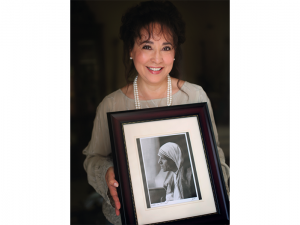About Emma González
FIELD MICE is a true story set in the 1950s and 60s where Emma is born to a blended family of ten, the only child of that union, and her half- siblings decades older than her. American-born Emma is a small, but endearing 5 year old Hispanic child who evolved from a terrified, confused toddler to an educated, self-confident teen. She was wrapped in blankets, left all day in an irrigation ditch, and ordered to stay there while the family disappeared “forever.” The family lived in Edinburg, Texas, migrated to Colorado, California, and back. Emma’s greatest joy and stability was Ovid, Colorado, a sugar beet farming community which she called “home, a cornucopia of rich cultures,” that “adopted” this lost migrant kid.
You will admire these migrants’ strength and struggle to just survive. Through the eyes of a child, Emma’s short vivid vignettes allow you to share her pain and joy. Her gifted use of imagery, graphically describes the squalid living conditions these migrants endured, such as “Camp Caca.” But, she adapted, and found a “family” of her own in the ditches: her “field mice” playmates- Papo, Lulu & Lala that entertained her though the long, hot days. You will smile when Emma meets three little girls for a magical tea party, applaud when she “twists away” with Chubby Checker, and sympathize with her when she “became a woman”. At the age of 10, she was assaulted by a family member, you will feel the terror and fear that ripped her inner sense, her innocence.
FIELD MICE brings back memories of the 60s. Rock n Roll music connected Emma to the non-migrant world. Simple things brought her joy: finding a shiny dime, and gobbling up Reese’s Peanut Butter Cups with her playmate, “an angel of the fields,” Patty. A Japanese farmer from Ovid saved her from the migrant life. As a “child of the field,” her family didn’t care if she went to school or not, but he did. Dedicated teachers in Ovid nurtured her, and gave her used textbooks and worksheets to “keep up” while migrating. Frustrated, she had no support, as her family considered education unnecessary, but to Emma, it was everything! She used S&H stamps, not for toys, but for books about countries across the seas that brought the world to “her world.” In the fields she wore ten-cent strings of faux pearls, symbols of HOPE. Emma’s Resiliency and Optimism is evident throughout ten tumultuous years trapped in the nomadic cycle.

